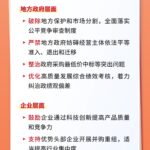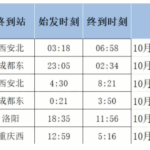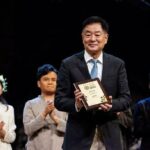Starting from the fall semester this year, public kindergartens will waive childcare and education fees for senior classes, while private kindergartens will reduce fees correspondingly based on the waiver standards of local public kindergartens of the same type. This policy is expected to benefit approximately 12 million people in the upcoming fall semester, reducing household expenses by a total of 20 billion yuan. What short-term impacts will this policy bring? From the perspective of increasing fiscal investment in education, what long-term changes can it drive?
Considerations Behind the Waiver Policy Coverage
What Are the Key Factors?
Why does the childcare and education fee waiver policy specifically target senior kindergarten classes?
From an educational perspective, the transition from senior kindergarten to primary school is crucial. The cognitive and numeracy skills developed during the senior kindergarten stage are essential for primary education.
Second, senior kindergarten has the highest enrollment rate. Statistics show that 99.6% of students entering primary or junior high school have received one to three years of preschool education, making this the group with the broadest coverage.
Third, feasibility and fiscal sustainability are also critical. The current policy is scientifically sound and practical.
Potential Impacts of the Fee Waiver Policy
What Changes Can Be Expected?
How might this new policy affect public and private kindergartens differently? What preparations are needed?
This policy can serve as a stepping stone toward future free education initiatives, further increasing preschool enrollment rates. Comprehensive preparations are required across all fronts. Currently, the national policy prioritizes expanding public kindergartens, especially in densely populated areas or regions with insufficient preschool resources. At the same time, the government is actively supporting affordable private kindergartens, urging localities to establish funding standards for such institutions. Additionally, corresponding measures must be taken in teacher training and other areas.
Outcomes of the Free Preschool Education Pilot Programs
What Were the Results?
Before this nationwide policy, 21 provinces and cities had already piloted free preschool education programs. What were the overall outcomes?
Some regions that implemented free preschool education achieved significant results. First, it accelerated preschool enrollment rates. Recent research, particularly in western regions, showed a substantial increase in gross enrollment rates after the policy was introduced, with many western provinces surpassing the national average.
Second, it played a vital role in improving livelihoods and reducing household financial burdens, contributing to poverty alleviation and delivering notable socioeconomic benefits.
Ensuring Effective Use of Preschool Education Funds
How can the allocated funds be used efficiently, and what evaluation and oversight mechanisms should be in place?
A series of management guidelines should be introduced to define the scope and direction of fund usage. Additionally, strict oversight must ensure every penny is well-spent, transforming policy benefits into tangible improvements for families.



